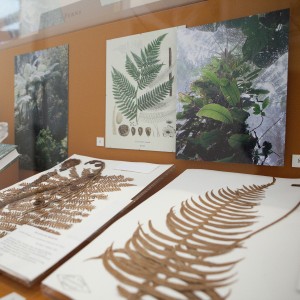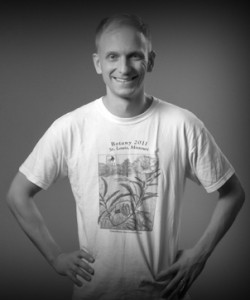Unraveling the Herbarium
Posted in Science on December 31 2012, by Matt Newman
 Want to map the evolutionary path of a plant species? Chances are good that you’ll find yourself thumbing through the stacks in an herbarium sooner or later. Here at the NYBG, the Steere Herbarium maintains a growing collection of over seven million specimens, each one meticulously studied, notated, and cataloged for reference. But botanical science of this tier is first and foremost a visual affair, relying on naked-eye examinations and scanning electron microscopes to untangle origins, relations, and the timeline of a given plant’s life on earth–where it’s been, and where it will be in the future. Needless to say, the effort can be tedious. But thankfully, the speedy march of technology is closing the gap, promising a fresh range of tools for identifying species new and old.
Want to map the evolutionary path of a plant species? Chances are good that you’ll find yourself thumbing through the stacks in an herbarium sooner or later. Here at the NYBG, the Steere Herbarium maintains a growing collection of over seven million specimens, each one meticulously studied, notated, and cataloged for reference. But botanical science of this tier is first and foremost a visual affair, relying on naked-eye examinations and scanning electron microscopes to untangle origins, relations, and the timeline of a given plant’s life on earth–where it’s been, and where it will be in the future. Needless to say, the effort can be tedious. But thankfully, the speedy march of technology is closing the gap, promising a fresh range of tools for identifying species new and old.
Among them, genomics leads the charge.
Jenn Cable of the New York Genome Center points all eyes toward James Beck, a botanist out of Wichita, Kansas, with a keen understanding of the future of the science. Using cutting edge genetic analysis, he’s now working with Steere Herbarium specialists to look beyond the microscope and into the very DNA of the specimens we keep, turning long-shelved specimens (some centuries old) into treasure troves of evolutionary information. By comparing genetic differences in these plants, Beck can not only chart changes among species over time, but parse the tiniest differences to pinpoint species identifiers that might not otherwise be visible to the naked eye.

With time, the process should only get easier. Beck’s oldest examined specimen currently dates back to 1881, owing to the fact that plant samples often see a degradation of available DNA with age. But within a few years, his window of opportunity is expected to widen considerably, allowing botanists to fill in the gaps in the DNA of even the oldest museum specimens. We may not be reenacting Jurassic Park, but it’s safe to say that the aim–to piece together the puzzle of age-old genetics–runs parallel to the fiction.
The advances in genomics can’t come at a better time, either. With herbariums around the world making a slow but steady push toward digitizing their collections, botanical science will increasingly rely on fast, accurate information through a global database of specimens. Having clear DNA evidence to remove the doubt of distance only serves to streamline that process. Of course, it’ll take the continued efforts of botanists like James Beck and those at the Steere Herbarium to see the ship forward. For more on the nitty-gritty science of it all, check out Jenn Cable’s detailed write up at NYGenome.org.
James Beck photograph courtesy of the New York Genome Center.

